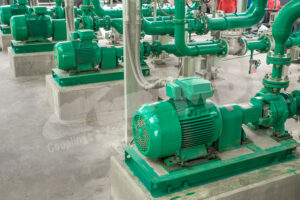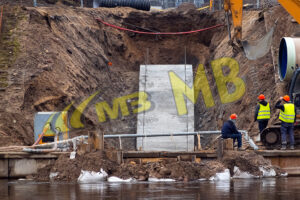Wellpoint dewatering is an important technique in construction and civil engineering, especially when dealing with groundwater management issues. It is critical in managing groundwater levels to ensure safe and efficient excavation and building. MB Exports is a leading dewatering pump manufacturer in Australia. In this post, we will look into the principles, applications, benefits, critical considerations, and the best equipment for the job of wellpoint dewatering.
What exactly is Wellpoint Dewatering?
Wellpoint dewatering is a groundwater control system that drains water from saturated soils, making excavation and building safer and more efficient. The technique is frequently used in foundation building, tunnelling, trenching, and pipeline installation.
The Wellpoint Dewatering Process:
Wellpoint dewatering is a highly successful method of lowering groundwater levels, resulting in a stable and safe working environment. MB Export specialises in wellpoint dewatering systems, which are specifically intended to remove water from unsettled or unstable ground situations such as weak foundations and trenches. This method entails deliberately placing small-diameter and shallow wells around the area. These wellpoints are linked together by a major pipe system and fed by a high-efficiency water pump. The MB Exports wellpoint dewatering pump is ideal for wellpoint applications due to its high performance.
The jetting tubes are used to install the wellpoints, and the water pump quickly removes the water, resulting in a dramatic fall in water levels. MB Exports pumps have a dependable filtering system that ensures the discharged water is properly cleansed and safe to be transported to another chosen place, whether it’s into the sewer system or a nearby body of water. This method is both time-efficient and cost-effective for regulating groundwater levels in a variety of construction and dewatering operations.
Advantages:
- Wellpoint dewatering lowers the water table, minimising soil saturation and providing a stable operating environment. It permits construction in places with high groundwater levels.
- Dewatering improves soil strength and stability by lowering pore water pressure in the soil. This eliminates the possibility of soil failures, cave-ins, and other building dangers.
- Wellpoint dewatering can shorten construction times by providing a dry working environment. It avoids the need for substantial excavation and allows for continuous development.
- Environmental Considerations: By preventing surplus water from being dumped into adjacent areas, wellpoint dewatering reduces the environmental impact. It also helps to remove pollutants from groundwater.
Considerations:
- Site Investigation: Before performing wellpoint dewatering, a thorough study of the site’s hydrogeology is required. Soil type, groundwater flow, and water quality must all be considered.
- System Design: The wellpoint system’s design and layout are critical to its efficiency. The required pumping capacity, wellpoint spacing, and header pipe arrangement are all factors to consider.
- Regulations and Permits: Permits may be required by local authorities for wellpoint dewatering projects. Environmental standards and discharge restrictions must be followed.
- Monitoring and upkeep: To ensure the dewatering system’s effectiveness, it must be monitored regularly, including water levels, equipment, and performance. Proper maintenance and timely repairs are critical for the system’s lifetime.
Conclusion:
Wellpoint dewatering is an important construction and civil engineering method that provides an effective answer to groundwater management issues. By using shallow wells and vacuum-assisted pumps, this technology lowers the water table, producing a controlled environment for excavation and construction projects. Groundwater control, greater stability, cost and time efficiency, and environmental considerations are all advantages of wellpoint dewatering. However, numerous crucial considerations should be made, such as conducting a complete site study, guaranteeing adequate system design, acquiring permissions and complying with regulations, and implementing frequent monitoring and maintenance. Wellpoint dewatering is dependable and efficient for managing groundwater levels in various construction and dewatering projects when certain concepts and considerations are followed. MB Exports is one of the most trusted wellpoint dewatering pump manufacturers and suppliers in Australia.
Read more about What You Need to Know About Submersible Pumps.




